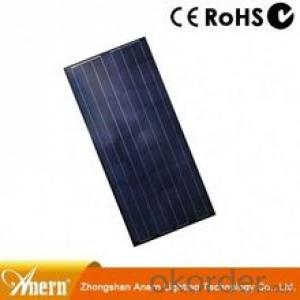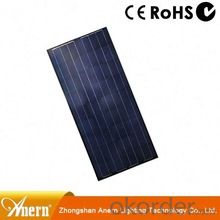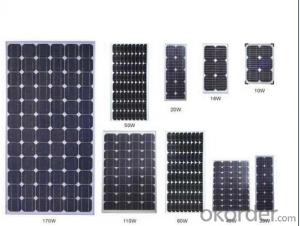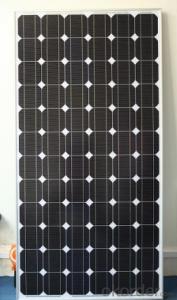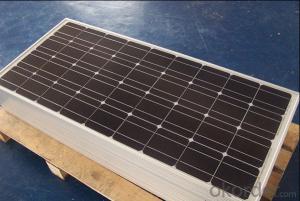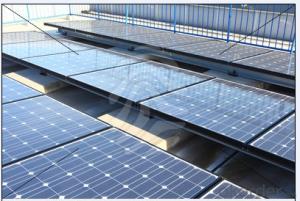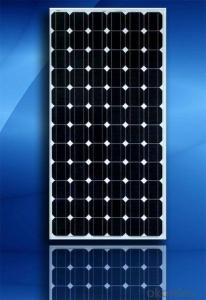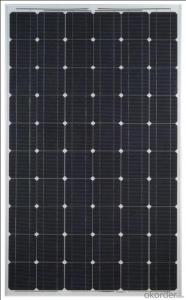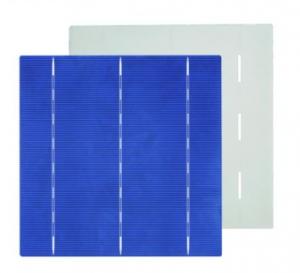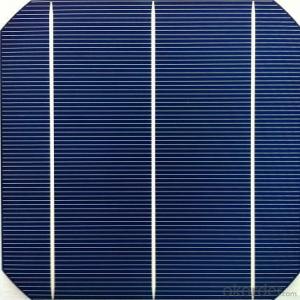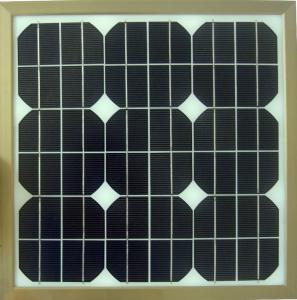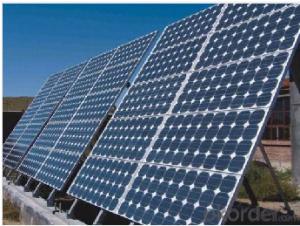HJT Solar Cells - High Efficiency Monocrystalline Solar Cell Price with 25 Year Warranty CNBM
- Loading Port:
- Qingdao
- Payment Terms:
- TT OR LC
- Min Order Qty:
- 100 set
- Supply Capability:
- 300000 set/month
OKorder Service Pledge
OKorder Financial Service
You Might Also Like
Quick Details
| Place of Origin: | China (Mainland) | Brand Name: | cnbm | Model Number: | PS-M672300 |
| Material: | Monocrystalline Silicon | Size: | 1956*990*40mm | Number of Cells: | 72 pieces |
| Max. Power: | 300W | Weight: | 23kg monocrystalline solar panel | Product warranty: | 25 years |
| Maximum system voltage: | 1000VDC | Tolerance: | 0/+3% | Cable length: | 1.2m |
| Connector: | MC4 compatible connector | Junction box: | IP65 Rated | Frame: | Anodized aluminium alloy |
| Front Cover: | 3.2mm thick.low iron tempered glass | Cell type: | Monocrystalline solar panel cells 156mm |
Packaging & Delivery
| Packaging Detail: | Monocrystalline solar panel packing information 28pcs. / box 20pcs. / pallet 560 pcs. / 40ft 602 pcs. / 40ft (H) |
| Delivery Detail: | in one week |
Specifications
1. Best monocrystalline solar cell price
2. 300W Monocrystalline solar panel with best price
3. 25 years warranty
Product Name
High Efficiency monocrystalline solar cell price with 25 year warranty
Product Description
1.Solar Panel Descprition
PS-M672 Series solar panel is connected in series by 70 pieces of 156mm×156mm Mono Crystalline silicon cells. Solar panel performance is produced according to IEC61215, IEC61730 international standard.
2.Solar Panel Characteristics
1)Manufactured according to international quality and Environment Management
System (ISO9001, ISO14001)
2)High efficiency crystalline silicon solar cells
3)High transmission Iow iron tempered glass, strong mechanical resistance
4)Anti-ageing EVA and excellent anti-climate back sheet
5)Anodized aluminum frame improves load resistance capabilities for heavy wind loads.
6)Standard waterproof junction box
7)High endurance to different weather
8)Good and friendly package with less transportation and storage space.
3.Solar Panel Warranty
1)10 years limited manufacturing warranty
2)10 years for 90% of warranted minimum power
3)25 years for 80% of warranted minimum power
4.Solar Panel Electric Characteristics
| Cell Type | Mono Solar Cell 156mm*156mm | |||
| Item | PS-M672285 | PS-M672290 | PS-M672295 | PS-M672300 |
| Power | 285W | 290W | 295W | 300W |
| Voc(V) | 44.8 | 45 | 45.3 | 345.5 |
| Isc(I) | 8.6 | 8.75 | 8.85 | 8.95 |
| Vm(V) | 36.2 | 36.3 | 36.5 | 36.6 |
| Im(I) | 7.87 | 7.99 | 8.08 | 8.20 |
| Cell Efficiency | 17.08 | 17.38 | 17.68 | 17.98 |
| Module Efficiency | 14.72 | 14.98 | 15.23 | 15.49 |
| Fuse | 15A | |||
| Max System Voltage | 1000VDC | |||
| Cell Number | 72cells | |||
| Tolerance | 0/+3% | |||
| Module Size | 1956*990*40(mm) | |||
| Weight | 23KGS | |||
| Cable Length | 0.9m | |||
| Connector | MC4 or compatible connector | |||

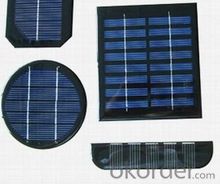
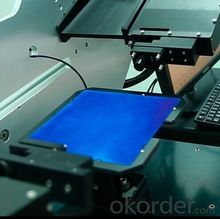
Global Projects
20MW Solar Power Plant in China
130KW Solar Power Plant in Japan
700KW Solar Power Plant in Japan

- Q: How do solar cells perform in areas with high levels of air pollutants?
- Solar cells generally perform less efficiently in areas with high levels of air pollutants. Air pollutants, such as smog, dust, and particulate matter, can accumulate on the surface of solar panels, reducing their ability to absorb sunlight. This buildup of pollutants creates a barrier between the sun and the solar cells, decreasing their overall performance and energy production. Additionally, air pollutants can also block and scatter sunlight, further diminishing the amount of sunlight reaching the solar cells. Therefore, in areas with high levels of air pollutants, regular cleaning and maintenance of solar panels are necessary to ensure optimal performance.
- Q: What is the cost of solar cells?
- The cost of solar cells can vary depending on various factors such as the type of solar cell, its efficiency, manufacturing process, and market conditions. Generally, the cost has been declining over the years and continues to do so. As of 2021, the average cost of solar cells is around $0.20 to $0.50 per watt. However, it's essential to consider the overall system cost, including installation, inverters, and other components, to determine the total investment required for a solar energy system.
- Q: Can solar cells be used on rooftops?
- Yes, solar cells can be used on rooftops. In fact, rooftop solar panels are one of the most common and effective ways to harness solar energy for residential and commercial purposes. They are installed on the rooftops of buildings to convert sunlight into electricity, providing a sustainable and cost-effective source of power.
- Q: Can solar cells be used in vehicles?
- Yes, solar cells can be used in vehicles. They can be integrated into the design of cars, buses, boats, and even airplanes to convert sunlight into electricity, providing power for various vehicle functions such as charging batteries, running onboard systems, or even powering the entire vehicle.
- Q: Can solar cells be used in underwater vehicles?
- Yes, solar cells can be used in underwater vehicles. However, their efficiency may be reduced due to the limited availability of sunlight underwater.
- Q: Can solar cells be used in areas with high humidity?
- Yes, solar cells can be used in areas with high humidity. While high humidity may slightly reduce the efficiency of solar cells, they can still generate electricity in such conditions. Additionally, advancements in solar cell technology have made them more resistant to moisture and environmental factors, allowing them to function effectively even in humid climates.
- Q: How do solar cells perform in areas with high levels of dust storms?
- Solar cells can be affected by high levels of dust storms as the accumulation of dust and debris on their surfaces reduces their efficiency. Dust particles can block sunlight from reaching the solar cells, which in turn reduces their energy production. Regular cleaning and maintenance are necessary in areas with high levels of dust storms to ensure optimal performance of solar cells.
- Q: Can solar cells be used to power water pumps?
- Yes, solar cells can be used to power water pumps. Solar cells convert sunlight into electricity, which can be used to operate water pumps. This offers a sustainable and environmentally-friendly solution for powering water pumps in areas where there is no access to electricity grids.
- Q: Can solar cells be used for air conditioning?
- Yes, solar cells can be used for air conditioning through the utilization of solar-powered air conditioning systems. These systems convert solar energy into electricity, which is then used to power air conditioning units, enabling cooling without relying on traditional energy sources.
- Q: Can solar cells be used in cold climates?
- Yes, solar cells can be used in cold climates. While they may not perform at their maximum efficiency in extremely cold temperatures, modern solar cell technology has advanced to be able to generate electricity even in low light and cold conditions. Additionally, snow on solar panels can be easily cleared to ensure proper functioning.
Send your message to us
HJT Solar Cells - High Efficiency Monocrystalline Solar Cell Price with 25 Year Warranty CNBM
- Loading Port:
- Qingdao
- Payment Terms:
- TT OR LC
- Min Order Qty:
- 100 set
- Supply Capability:
- 300000 set/month
OKorder Service Pledge
OKorder Financial Service
Similar products
Hot products
Hot Searches
Related keywords
